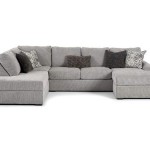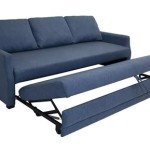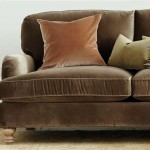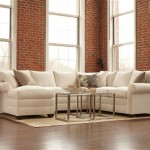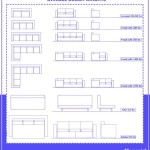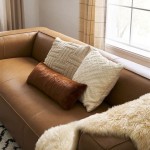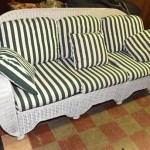Sofa Dimensions In Meters: A Comprehensive Guide
Understanding sofa dimensions is crucial for ensuring a comfortable and functional living space. When considering a new sofa purchase, the dimensions, specifically in meters, must be carefully assessed to guarantee a proper fit within the intended room, considering not only the available space but also the overall flow and aesthetic of the interior design. Neglecting this aspect can lead to a visually cluttered or functionally awkward environment.
The use of metric measurements, specifically meters, offers a standardized and easily comparable system for understanding the size of a sofa. While other units like inches or feet are common in some regions, meters provide a clearer and more universally applicable measurement. This is particularly important when sourcing furniture from international manufacturers or comparing models from different retailers, as inconsistencies in unit conversions can arise causing problems. This article aims to provide a comprehensive guide to understanding sofa dimensions in meters, covering various sofa types and related considerations.
Key Dimensions to Consider
Several key dimensions define the overall size and shape of a sofa. These dimensions, when expressed in meters, provide a clear understanding of the sofa’s physical presence within a room:
Length (Width): This is the most commonly considered dimension and refers to the overall horizontal distance of the sofa, from one outer edge of the arm to the other. It dictates how much wall space the sofa will occupy and is a primary factor in determining whether a sofa will physically fit in a specific location. Length is critical considering the total available space and other furniture present in the room. Typical sofa lengths range from 1.5 meters for smaller loveseats to over 3 meters for large sectional sofas.
Depth (Seat Depth): Depth refers to the distance from the front edge of the sofa to the back, influencing the seating comfort and the amount of floor space the sofa occupies. Deeper sofas generally offer more space to recline, while shallower sofas may be more suitable for smaller rooms. It's important to distinguish between overall depth and seat depth. Overall depth includes the back frame and any decorative elements, while seat depth measures only the usable seating area. Seat depth usually falls between 0.5 meters and 0.7 meters. Overall depth can range from 0.8 meters to over 1 meter, depending on the style.
Height: The height of a sofa, measured from the floor to the highest point of the backrest, influences the visual scale of the sofa within a room. Higher backrests can create a more formal or imposing presence, while lower backrests offer a more relaxed and minimalist aesthetic. The seat height, which is the distance from the floor to the top of the seat cushion, affects the ease of getting in and out of the sofa. Standard sofa heights typically range from 0.7 meters to 1 meter, while seat heights are generally between 0.4 meters and 0.5 meters.
Arm Height and Width: The arm height, measured from the floor to the top of the armrest, affects the comfort of resting one's arms while seated. The arm width impacts the overall length of the sofa. A wide, rolled arm will add more length to the total sofa dimension compared to a narrow, track arm. Arm heights typically range from 0.55 to 0.7 meters. Arm widths can vary widely from under 0.1 meters to over 0.3 meters.
Sofa Type and Typical Dimensions
Different sofa types have characteristic dimensions. Understanding these typical sizes in meters can help narrow down the options when searching for the appropriate sofa:
Loveseats: Designed to seat two people comfortably, loveseats are smaller sofas, typically ranging in length from 1.5 meters to 1.8 meters. The depth generally falls between 0.8 meters and 0.9 meters, and the height is usually between 0.75 meters and 0.9 meters. Loveseats are ideal for smaller apartments or complementing larger seating arrangements.
Three-Seater Sofas: These are the most common type of sofa, designed to seat three people. Their lengths usually range from 2 meters to 2.5 meters. The depth is typically between 0.85 meters and 1 meter, and the height often falls between 0.8 meters and 0.95 meters. These sofas offer a good balance of seating capacity and space efficiency.
Sectional Sofas: Sectional sofas are composed of multiple modular pieces that can be arranged in various configurations. Their overall dimensions vary significantly depending on the number of sections and the layout chosen. A typical L-shaped sectional sofa might have a length of 2.5 meters to 3.5 meters along one side and 2 meters to 3 meters along the other. The depth and height are generally similar to three-seater sofas, around 0.85-1 meter for depth and 0.8-0.95 meters for height. Sectional sofas are ideal for larger living rooms and offer flexible seating arrangements.
Corner Sofas: Similar to sectional sofas, corner sofas are designed to fit snugly into a corner of a room. They often feature a built-in chaise lounge on one side or a corner wedge to maximize seating space. Their dimensions also vary widely based on the specific design, but a typical corner sofa might have a length of 2.2 meters to 2.8 meters along each side of the corner. The depth and height are usually similar to those of three-seater sofas.
Sofa Beds: Sofa beds, also known as sleeper sofas, are designed to convert into a bed. Their dimensions are generally similar to standard sofas when in the sofa configuration, but the dimensions of the bed when opened should also be considered. A queen-size sofa bed, for example, might have a length of 2 meters to 2.3 meters as a sofa and require an additional 2 meters of floor space in front to fully extend into a bed.
Practical Considerations for Measuring and Planning
Accurate measurement and careful planning are essential to ensure the chosen sofa fits comfortably within the intended space. The following are some practical considerations for the process:
Measure the Space Accurately: Use a measuring tape to determine the exact dimensions of the area where the sofa will be placed. Measure the length, width, and height of the space, paying attention to any architectural features such as doorways, windows, or radiators that might obstruct the sofa. Draw a rough sketch of the room and note down all the measurements.
Consider Traffic Flow: Ensure that there is enough space around the sofa for comfortable movement. Leave at least 0.6 meters to 0.8 meters of walking space between the sofa and other furniture or walls. Avoid placing the sofa in a position that blocks doorways or creates bottlenecks in the room.
Account for Doorways and Hallways: Check the dimensions of doorways and hallways to ensure the sofa can be easily moved into the room. Measure the height and width of the doorways and compare them to the dimensions of the sofa. If the sofa is too large to fit through the doorways, consider disassembly options or choosing a smaller sofa.
Visualize the Sofa in the Space: Use painter's tape or cardboard to mark out the dimensions of the sofa on the floor. This will help visualize the sofa's footprint and assess whether it fits comfortably within the space. Consider the scale of the sofa relative to other furniture in the room to ensure a balanced and harmonious design.
Check the Manufacturer's Specifications: Always refer to the manufacturer's specifications for accurate dimensions of the sofa. Be aware that there may be slight variations in dimensions due to manufacturing tolerances. If possible, visit a showroom to see the sofa in person and get a better sense of its size and scale.
Consider the Sofa Style: The style of the sofa can also affect its perceived size and impact on the room. Sofas with high backs and bulky arms can feel larger and more imposing, while sofas with low profiles and streamlined designs can feel more spacious. Consider the overall style of the room and choose a sofa that complements the existing decor.
Think About Seating Capacity: Determine the intended seating capacity of the sofa based on the number of people who will typically use it. Choose a sofa that is large enough to accommodate everyone comfortably without feeling overcrowded. Consider a sectional sofa or a corner sofa if extra seating is needed.
Pay Attention to Seat Depth: Seat depth is a critical factor in comfort. A deeper seat allows for more relaxed lounging, while a shallower seat provides more upright support. When selecting a sofa, consider the intended use and personal preferences for seat depth.
Consider the Back Height: Back height affects both the aesthetics and comfort of the sofa. A high back provides more support for the head and neck, while a low back offers a more modern and minimalist look. Select a back height that complements the overall style of the room and provides the desired level of support.
Think About Arm Style: Arm style influences both the style and functionality of the sofa. Wide, rolled arms offer a comfortable place to rest one's arms and can add a touch of elegance, while narrow, track arms create a more streamlined and contemporary look. Consider the arm style that best suits the intended use and overall design of the room.
By carefully considering these practical aspects, individuals can select a sofa with dimensions in meters that perfectly fit the chosen space, enhancing both comfort and aesthetics.

Sofa Size Calculator
How Long Is A 3 Seater Sofa In Meters Quora

Sofa Dimensions For 2 3 4 5 6 Person Couches Diagrams Included Home Stratosphere

Sofa Fabric Estimator Calculator How Much To Cover A

Standard Sofa Dimensions For 2 3 4 And 5 Person Charts Diagrams Engineering Discoveries

Standard Sofa Dimensions For 2 3 4 And 5 Person Charts Diagrams Engineering Discoveries

Mhl0060 Conception L Shaped Sofa With Stool Furniture Manila

Plenta L Shape Lh Sofa
How Long Is A 3 Seater Sofa In Meters Quora

Buy Broadway V2 3 Seater Fabric Sofa In Ada Granite Upto 65 Discount Godrej Interio

